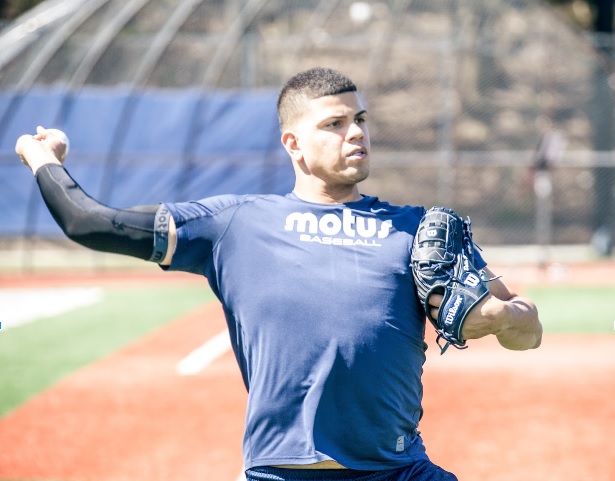
For the last several years, MLB and the sport of baseball in general has been hit with an epidemic — UCL injuries and Tommy John Surgery. While the success rates for the surgery are high, the surgery keeps pitchers (the majority of the patients) out of action for more than a year.
The team at Motus Global has developed a UCL workload monitor motusTHROW, which is legal for game use and has been used by New York Yankees All-Star Dellin Betances. It’s a sensor that tracks all throws made by a player (not just in game pitch counts) and tests the stress being put on the UCL.
“It works like the technology in phones that turn phones into steering wheels or light sabers,” said Will Carroll, director of media operations. “It’s gathering all sorts of information.”
https://www.youtube.com/watch?v=HyEuDW4FeO4
Carroll noted that while it’s used by many teams at different levels, one of the problems has been that baseball is traditionally slow to adapt to things.
But since the UCL workload monitor is approved for in game use and Tommy John Surgery is such a dominant part of the game, he added that we shouldn’t be far from a time when we take it for granted, much like balls, bats and gloves.
Carroll also compared it to other changes that the game has seen in the relatively recent past.

Photo Credit: Motus Global
“We don’t think it’s going to be overnight; there are teams that are stronger adopters of it,” Carroll said. “We’re really in early days of how teams are going to take this. It’s like the Moneyball era with teams ahead of others with date. There’s going to be some old school pitching coaches and that’s okay. Those guys are going to be out of the game someday.”
The next question is simple.
If teams at all levels were to more or less instantly adopt the UCL workload monitor, how long would it take before we saw a rapid drop in UCL injuries and Tommy John Surgeries?
Its hard to place a definitive answer on that, but Carroll said, “We think that if everyone adopted it today, that we would show results very soon.”
Presently, the device costs $150. Carroll noted that a lower cost would be ideal, but also stated that it’s not out of range, especially when compared to what people spend on gloves and bats.
The same technology also works for hitters. It shows which pitches hitters tend to do best with, as well as the ones that they struggle with.
This is one of only three sensors that’s been approved for in game use. The other two are WHOOP, which tracks how far players run, and Zephyr — a heart rate monitor.